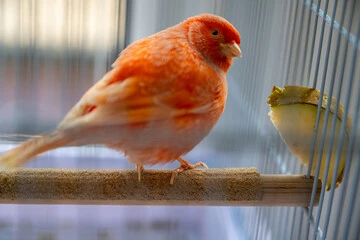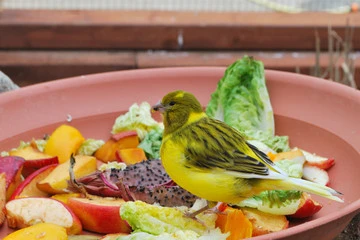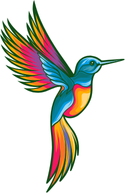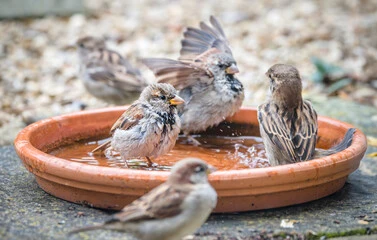Canary Food: Your Ultimate Guide to a Vibrant, Healthy Songbird

That first bright burst of song in the morning – it’s pure magic, isn’t it? Our canaries bring sunshine into our homes with their melodies and cheerful presence. But here’s the thing many new owners discover the hard way: a truly vibrant, long-lived canary doesn’t thrive on seeds alone. I remember watching my first canary, Pip, lose some of his spark simply because I didn’t fully grasp what his tiny body needed. Just like us, these feathered jewels require a thoughtful, balanced canary diet to fuel their incredible energy and song. Getting their nutrition right is the absolute foundation of their health, happiness, and that glorious music we adore. This guide cuts through the confusion to give you exactly what you need to know about optimal canary food.
Table of Contents
Understanding the Canary Diet: More Than Just Seeds!

Canaries are granivores, meaning seeds are a natural and essential part of their diet. However, in the wild, their menu is incredibly diverse – they forage on a wide range of seeds, grasses, buds, greens, and even small insects, especially when feeding young. The common mistake in captivity? Offering a monotonous diet of a basic seed mix. This often leads to nutritional gaps, obesity, liver problems, or feather issues.
Think of it this way: a seed-only diet for your canary is like you eating only crackers! While seeds provide energy (fat and carbohydrates), they are often deficient in crucial vitamins (like A, D, K, and many B vitamins), minerals (calcium, iodine), and high-quality protein. A truly balanced best food for canaries takes this wild dietary model and tailors it safely for our homes.
Why Variety is Non-Negotiable
- Prevents Malnutrition: Filling specific nutrient voids that seeds leave.
- Combats Obesity and Fatty Liver Disease: Seed-heavy diets are high in fat. Fresh foods add bulk and nutrients with fewer calories.
- Supports Strong Immunity: Vitamins A & C, found abundantly in veggies, are vital for disease resistance.
- Promotes Feather Health: Protein, amino acids, and specific vitamins/minerals (like iodine) are essential for gorgeous plumage and smooth molting.
- Encourages Natural Foraging Behaviors: Offering diverse textures and forms keeps your bird mentally stimulated.
The Core: Choosing and Using a Quality Canary Seed Mix

While not the only thing they need, a premium canary seed mix is the staple carbohydrate source. Don’t just grab the first bag you see! Look closely.
What Makes a Good Mix?
- High-Proportion Canary Grass Seed: This is their primary natural seed (small, shiny, and light brown). It should be the main ingredient.
- Limited Filler Seeds: Avoid mixes overloaded with bulky, less nutritious, or fatty seeds like cheap millet or excessive oats/niger (thistle).
- Cleanliness & Freshness: Seed should smell fresh and earthy, not musty or stale. Minimal dust or chaff. Buy from stores with high turnover.
- Fortification (Optional): Some reputable mixes include added vitamins/minerals sprayed onto the seeds (not a substitute for fresh foods/supplements, but can help slightly).
Common Seed Mix Ingredients Breakdown:
| Ingredient | Nutritional Role | % in Good Mix | Considerations |
|---|---|---|---|
| Canary Grass Seed | Primary energy source (carbohydrates) | 50-70% | Essential staple |
| White Millet (Panicum) | Carbohydrate, some protein/fiber | 15-30% | Good in moderation |
| Oat Groats | Healthy fats, fiber, protein | 5-15% | Nutrient-rich, avoid excessive hulls |
| Niger Seed (Thistle) | High fat and protein, energizing | 5-10% | Very fatty – limit amount! |
| Flax Seed | Omega-3 fats, fiber | <5% | Beneficial fats, very small amount |
| Hemp Seed | Excellent protein, healthy fats | <5% | Tiny amounts (very rich) |
| Peanuts/Sunflower | High fat, low other nutrients | Avoid | Too Fatty! Promotes Obesity |
Feeding Seed Mix Right:
- Quantity: Offer approximately 1 teaspoon per bird per day in a clean dish. Adjust slightly based on your bird’s size (e.g., smaller finch-canary cross vs. larger Yorkshire) and if they eat significant pellets/fresh food.
- Hygiene is Paramount: Seeds spoil easily and can grow mold (aflatoxin!). Discard uneaten hulls daily (they cover good seeds underneath – “empty calories”). Wash the seed dish with hot water and soap every single day.
- Observe: Does your bird eat all components, or just pick favorites? A bird consistently avoiding certain seeds might indicate nutritional imbalance or the need for supplementation – or a sign to try a different mix brand.
Beyond Seeds: The Power of Fresh Foods – Essential for the BEST Diet
This is where most diets fail, yet it’s absolutely transformative. Fresh vegetables, leafy greens, and occasional fruits are non-negotiable for mimicking the natural diversity and providing essential nutrients missing from seeds. A canary diet rich in fresh food truly unlocks vibrancy.
Excellent Fresh Food Choices (Offer Daily):
- Dark Leafy Greens: Kale, Collard Greens, Swiss Chard, Bok Choy, Dandelion Greens (unsprayed!), Spinach* (Offer 2-3x week, contains oxalates which can bind calcium in large daily amounts)
- Colorful Vegetables: Finely chopped Bell Peppers (red, yellow, green – high in Vitamin A), Broccoli (florets and leaves), Cooked Sweet Potato (cooled), Carrots (small shreds)
- Other Great Options: Cucumber (mild hydration), Zucchini/Squash, Sprouted Seeds/Mung Beans (excellent nutrition – rinse frequently!), Fresh Corn (tiny amount), Cooked Green Beans, Peas
Fruits (Offer Sparingly – 1-2 times per week, small piece): High in sugar.
- Apple (remove seeds – toxic!), Pear, Berries (blueberry, raspberry, strawberry), Melon (cantaloupe, honeydew), Papaya, Orange segment
Pro Feeding Tip: Start with wet, finely chopped greens – they often resemble clumps of plant matter a wild bird might forage. Hang pieces or tuck them into cage bars!
Introducing Fresh Foods (Patience Wins!):
- Start Small: Place a tiny amount of a wet, appealing green (like romaine or broccoli floret) near their favorite perch early in the day.
- Be Consistent: Offer daily, even if ignored initially. Canaries are neophobic (scared of new things).
- Model Eating: Make enthusiastic “eating sounds” while handling the veggie near them (silly but often works!).
- Mix with Favorites: Very finely chop greens and sprinkle over a small portion of their favorite seed. If your bird devours niger seed, hide a tiny flake of bell pepper underneath an empty hull!
- Try Texture: Offer finely grated carrot or cooked, mashed sweet potato.
Boosting Health: Canary Food Supplements
Even with a great seed base and fresh foods, targeted supplements can fill specific gaps, especially during stressful times like molting or breeding.
- Cuttlebone/Mineral Block: An absolutely essential source of calcium (& beak trimmer!). Keep one in the cage at all times.
- Vitamin & Mineral Supplements: Use cautiously. If feeding a high percentage of fortified pellets and abundant fresh foods, extra vitamins might lead to overdosing (especially Vitamins A & D). Best Used:
- During the demanding molt (for protein, amino acids, B vitamins).
- If your bird is ill or recovering.
- If transitioning to a better diet and fresh food intake is still low. Always choose reputable avian-specific brands and follow dosage EXACTLY. Dusting a little powder onto wet greens is effective.
- Grit (Oyster Shell/Insoluble Grit): Controversial. Wild birds ingest grit to help grind seeds in their crop. Modern premium pellets and hulled seeds may reduce the need. Provide ONLY insoluble grit (Oyster shell like cuttlebone provides calcium, not grit). DO NOT offer soluble grit (designed for chickens) – it can cause crop impaction in canaries. Many avian vets now recommend skipping grit unless specifically advised. When in doubt, consult your vet.
- Iodine: Crucial for thyroid health. Deficiency causes breathing issues (“goiter”). Good iodine sources include small bits of seaweed or like Dr. Harvey’s blend boasting [“nuts, seeds, vegetables, fruits and grains. Use an iodine block specifically formulated for small birds if your diet/text water isn’t providing it. Don’t overdose.
Canary Feeding Tips for Long-Term Success

Putting it all into practice seamlessly requires some smart habits:
- Daily Routine: Offer fresh seed mixture and fresh water first thing. Provide fresh vegetables/greens later in the morning. Remove uneaten wet fresh food after 3-4 hours to prevent spoilage. Ensure constant access to cuttlebone.
- Water: Provide fresh, clean water daily in a sturdy dish. Change it out more frequently if it gets soiled. Deep bowls are best! Consider using a glass or ceramic bird waterer for hygiene.
- Monitor Weight & Health: Weigh your bird weekly (small gram scale). Should feel keel bone slightly but not prominent. Poor feather quality, lethargy, changes in droppings, or difficulty breathing warrant an avian vet visit – nutrition is often involved.
- Avoid Toxins: NEVER offer avocado, chocolate, caffeine, alcohol, onions, garlic, fruit pits/seeds (especially apple seeds – cyanide), high-salt, or high-fat junk food. Beware of toxic houseplants near the cage. Ensure veggies are washed.
- Pellets: While not mandatory with an excellent fresh food/seed rotation, high-quality pellets like Harrison’s Bird Foods (super fine) or TOP’s can offer balanced nutrition as a primary food base for those who struggle to get enough variety otherwise. Transition VERY gradually over weeks/months using the paste/mixing method mentioned earlier. Learn more about maximizing your bird’s home life with the perfect canary bird cage setup.
- Reducing Seed Dependency: Gradually decrease the daily seed portion as you increase fresh food acceptance and potentially incorporate a small amount of pellets. The goal is variety.
Finding Excellent Commercial Options
Choosing quality commercial food matters:
- Dr. Harvey’s Incredible Canary Blend: As highlighted earlier, their focus on “real, whole foods blend of nuts, seeds, vegetables, fruits and grains.” with zero “chemicals, dyes, preservatives” speaks volumes. Ideal for supplementing the base diet.
- Reputable Seed Mix Brands: Higgins VitaSeed Golden Canary, Versele-LagaPremium Canary or Oriental Insight, Volkman Avian Science Super Canary. Avoid generic “bird seed” bags.
- Highly Regarded Pellet Brands (Forti-Diet Fortified Crocks): Harrison’s Bird Foods (High Potency Fine), TOP’s Pellets (Small), Lafeber’s Premium Daily Diet Pellets Nutribird A19/A21.
- Amazon Bestsellers: Kaytee Forti-Diet Pro Health or Wild Harvest often appear, but crucially compare ingredients to the principles above – high canary grass seed, low fillers/fat.
Frequently Asked Questions (FAQ) About Canary Food
1. What is the absolute best food for my canary?
There isn’t one single “best” item. A variety is vital! The best food for canaries is a balanced combination: a moderate amount of a high-quality canary seed mix (about 1 tsp/day), abundant dark leafy greens and colorful vegetables offered daily, a constant supply of cuttlebone, and potentially small amounts of pellets or targeted supplements during specific needs like molting. Explore our guide on Gloster canaries for specific breed considerations.
2. Can my canary eat fruit?
Yes, but sparingly! Fruits are treats due to high sugar content. Offer tiny pieces of apple (no seeds!), pear, berries (blueberry, raspberry), or melon 1-2 times per week. Avoid banana (sticky) and citrus for most birds. Focus mostly on veggies.
3. Do I need to give my canary grit?
Most modern avian vets recommend against insoluble grit for canaries fed on commercial seed mixes and pellets. The primary purpose – grinding seeds – is less critical with hulled seeds. The significant risk is crop impaction if they consume too much. Cuttlebone is essential for calcium and beak grinding – this is NOT grit. If in doubt, consult your vet.
4. How do I get my picky canary to eat veggies?
PATIENCE is key! Offer consistently (daily), try different textures (finely chopped, whole leaf hung up, grated), make it wet/enticing, eat it “yourself” in front of them enthusiastically, and mix tiny bits with their very favorite seed initially (like niger stuck to a leaf). It can take weeks or months. Persist! It’s vital for their health. Discover how red canaries get their vibrant hue – it’s closely tied to diet choices!
5. How much should I feed daily?
- Seed Mix: Approx 1 teaspoon per bird per day.
- Fresh Veggies/Greens: Offer a variety roughly the size of your bird’s head daily. Discard uneaten wet parts after a few hours.
- Pellets: Follow package guidelines if transitioning, usually starting small and increasing.
Always ensure plentiful fresh, clean water! Monitor your bird’s weight to fine-tune portions.
Keeping the Song Strong and Feathers Bright
Your canary’s health, dazzling plumage, and joyful song hinge on the canary food choices you make daily. Start today – look at that little food dish not just as sustenance, but as vital fuel for vitality and life. Ditch the seed-only mindset! Embrace the power of dark leafy greens, the color of bell peppers, the crunch of a fresh sprout. Introduce changes patiently and persistently. Supplement wisely, especially during molting.
The reward? Years filled with vibrant color, energetic flights, and that unmistakable, heart-lifting song. Imagine that dazzling Gloster bounding around their spacious cage, feathers glowing because of the powerhouse diet you provide.
What’s one fresh food you’ll try offering your canary this week? Or perhaps a canary food supplement? Share your experiences, successes, or questions in the comments below – let’s create a community where we all learn to nourish our feathered friends better! Don’t forget to pin this guide to refer back to!






